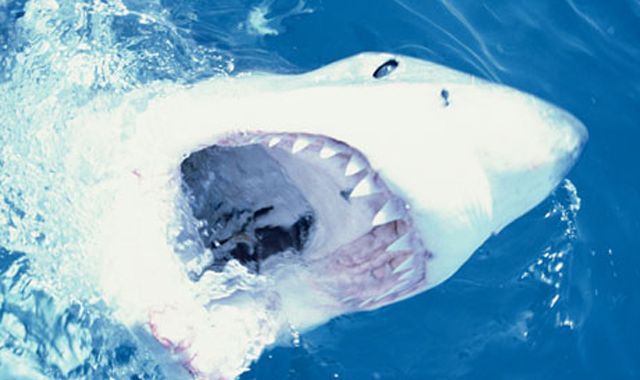Everything we need to know about teeth, we learned from Shark Week
In all our years of fanatically watching Shark Week, we’ve learned a few things: Don’t go swimming at dusk; avoid inserting body parts into a shark’s mouth; we’ll probably need a bigger boat, and, perhaps most interestingly, that a shark can endlessly replace its teeth-which could have major implications for human dental health.

In all our years of fanatically watching Shark Week, we’ve learned a few things: Don’t go swimming at dusk; avoid inserting body parts into a shark’s mouth; we’ll probably need a bigger boat, and, perhaps most interestingly, that a shark can endlessly replace its teeth-which could have major implications for human dental health.
In an effort to terrify generations of wary swimmers, sharks have mouths full of a seemingly endless amount of flesh-rending chompers. And endless they are: at any given time, these aquatic beasts can have anywhere from five to 50 rows of teeth, depending on the type of shark (the average is 15 rows). These teeth wait in line until a tooth in the front row falls out, which happens about once a week.
Since sharks are cartilaginous fish, their teeth sit in cartilage and do not have roots like human teeth, which makes it easy for them to fall out or get broken when the shark starts chomping on a fish or your deliciously tender thigh. When a tooth falls out, the pearly whites in subsequent rows rotate forward to fill the empty space, a process that can take less than a day to complete. Throughout its lifetime, a shark may have-and shed-over 35,000 teeth. All of this basically means that if your appendages end up in a shark’s mouth, they won’t just be getting gummed.
Related reading: New study finds beaver teeth could provide insight on human tooth decay
Once you get past the panic-inducing pointiness of shark teeth, they actually have a lot in common with human dentition. Both shark and human teeth contain dentin, and both types of teeth are equally as hard (though good luck chewing on a shark in retaliation). However, shark teeth are coated in acid-resistant fluoroapatite enamel that makes cavity development nearly impossible (fluoroapatite is also one of the main ingredients in toothpaste). In one study conducted by German researchers, it was discovered that the outer coating of the teeth of mako and tiger sharks contained 100 percent fluoride.
The ability to naturally replace lost teeth makes sharks an attractive subject for researchers looking to combat and correct tooth loss in humans. In a 2009 study, geneticists at the University of Rochester bred mice that lacked the gene that prevents additional tooth formation. The mice subsequently grew extra teeth next to their molars, giving scientists hope that if they could identify exactly what triggers new teeth to develop, they could potentially discover how to regenerate teeth in human adults.
Trending article: The 50 weirdest dental crimes across the USA
In 2010, researchers at Columbia University Medical Center took the research even further, examining a new tissue regeneration technique that could allow people to regrow missing teeth as needed, rather than develop a second row of teeth like Jaws. Dr. Jeremy Mao, a professor of dental medicine at Columbia, developed a growth factor-infused, three-dimensional scaffold that could serve as the framework for new teeth grown from stem cells. By directing the body’s own stem cells to the location, the cells could colonize the scaffold, growing a tooth in the socket.
So far, the technology hasn’t been put into mainstream use, though the research is promising. So, unless you’re Shark Boy (a British eight-year-old who had two rows of teeth after his adult teeth grew in before his baby teeth fell out), you’ll have to make do with one row of teeth, or dentures when you lose those.
Oral Health Pavilion at HLTH 2024 Highlighted Links Between Dental and General Health
November 4th 2024At HLTH 2024, CareQuest, Colgate-Palmolive, Henry Schein, and PDS Health launched an Oral Health Pavilion to showcase how integrating oral and general health can improve patient outcomes and reduce costs.
Episode 31: Dentsply Sirona Implant Announcements
September 30th 2021DPR’s Editorial Director Noah Levine sat down with Gene Dorff, Dentsply Sirona’s group vice president of implants and Dr. Dan Butterman to review several big announcements the company made in the arena of implants during Dentsply Sirona World 2021 in Las Vegas.